Uncategorized
-
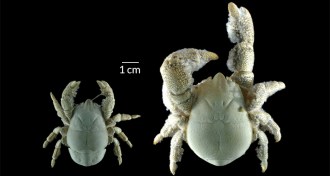 Animals
AnimalsNewly discovered yeti crab swarms around Antarctic hydrothermal vents
A newly discovered species of yeti crab thrives in tough conditions on Antarctic hydrothermal vents.
-
 Paleontology
PaleontologyFossil worm adds head to its spiny appearance
Hallucigenia sparsa gives hints to how some animals ended up with teeth in their guts and platelike pieces around their mouths.
-
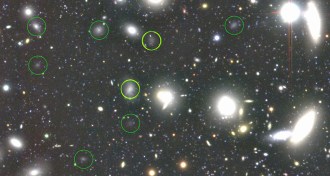 Astronomy
AstronomyDark galaxies grow in abundance
Nearly 1,000 shadowy galaxies lurk in a nearby cluster, some of which are as massive as the Milky Way and yet have only 0.1 percent the number of stars.
-
 Astronomy
AstronomyMagnetic ‘glue’ helps shape galaxies
Galaxy-wide magnetic fields may play a role in shaping the spiral arms of gas and stars.
-
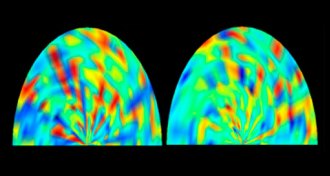 Neuroscience
NeuroscienceSense of smell is strictly personal, study suggests
A new test can identify individuals based on their sense of smell, and may hold information about a person’s genetic makeup as well.
-
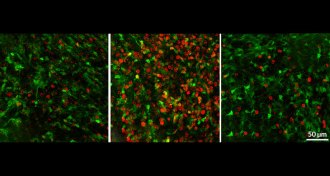 Neuroscience
NeuroscienceBrain’s adult stem cells born early
By tracing the lineages of adult stem cells in the mouse brain, scientists get a view of the cells’ early lives.
-
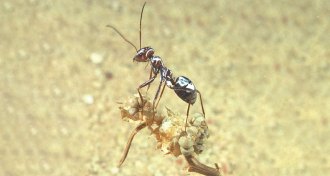 Animals
AnimalsSilver ant hairs reflect sunlight, keeping Sahara dweller cool
The shiny hairs of the Saharan silver ant simultaneously reflect sunlight and permit the release of body heat, keeping the insects just cool enough to scavenge in the extreme summer sun.
By Andrew Grant -
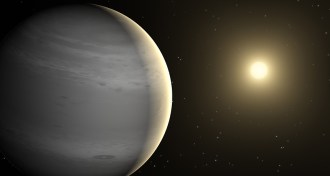 Astronomy
AstronomyBig exoplanet may be surrounded by helium
Warm Neptune-sized exoplanet might have atmospheres filled with helium.
-
 Earth
EarthFast-spreading crack threatens giant Antarctic ice shelf
A fast-spreading crack threatens Larsen C, one of Antarctica’s biggest ice shelves, satellite data suggest.
-
 Planetary Science
Planetary ScienceEvidence mounts for active volcanoes on Venus
The Venus Express orbiter detected possible signs of active volcanism on the planet next door.
-
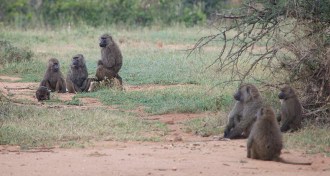 Animals
AnimalsWhen baboons travel, majority rules
GPS study suggests baboons use simple rules to resolve travel disputes without leaders.
By Bruce Bower -
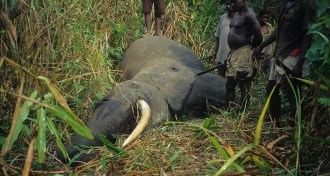 Genetics
GeneticsIvory DNA pinpoints poaching hot spots
Genetic analysis of ivory DNA reveals major poaching hot spots in Africa.
By Meghan Rosen